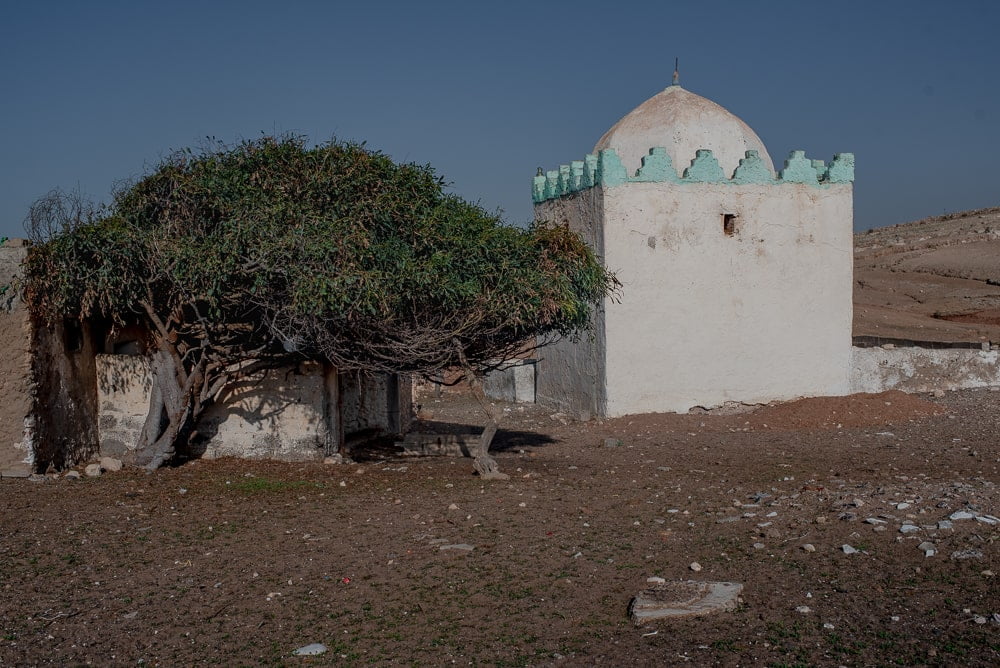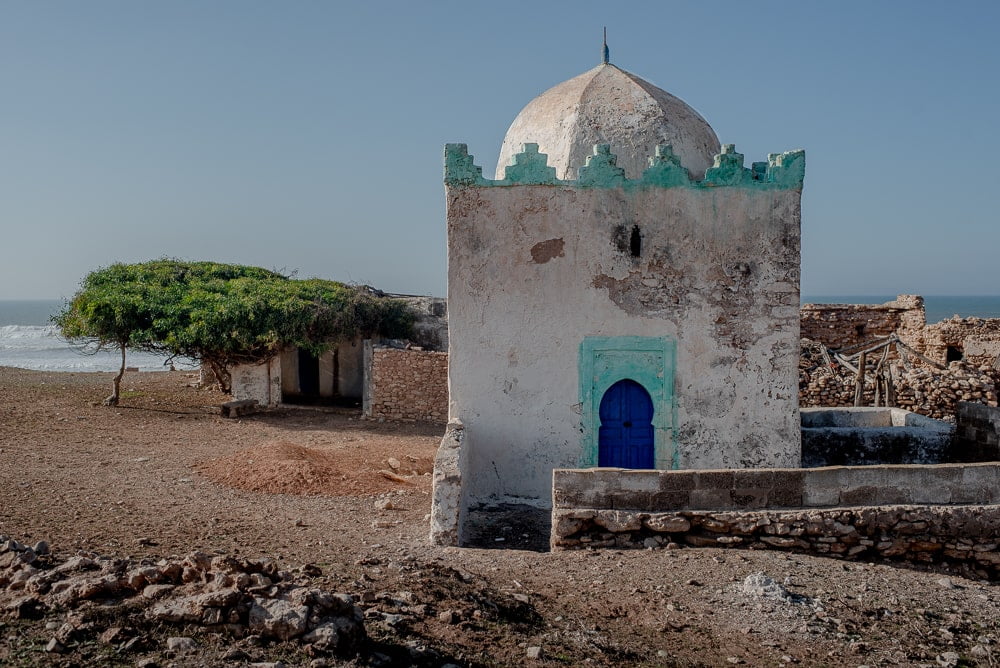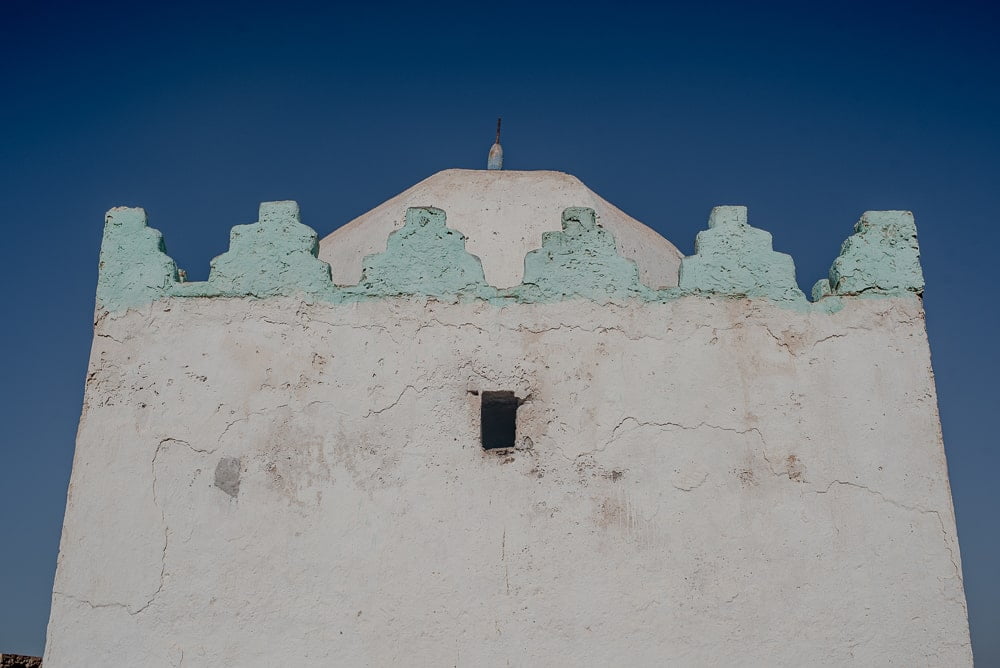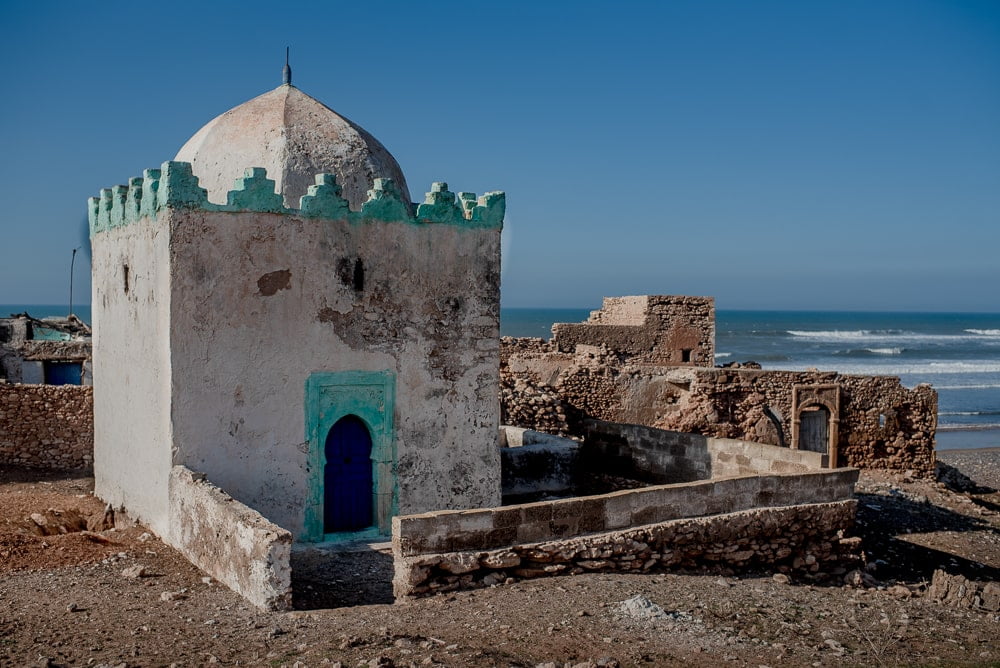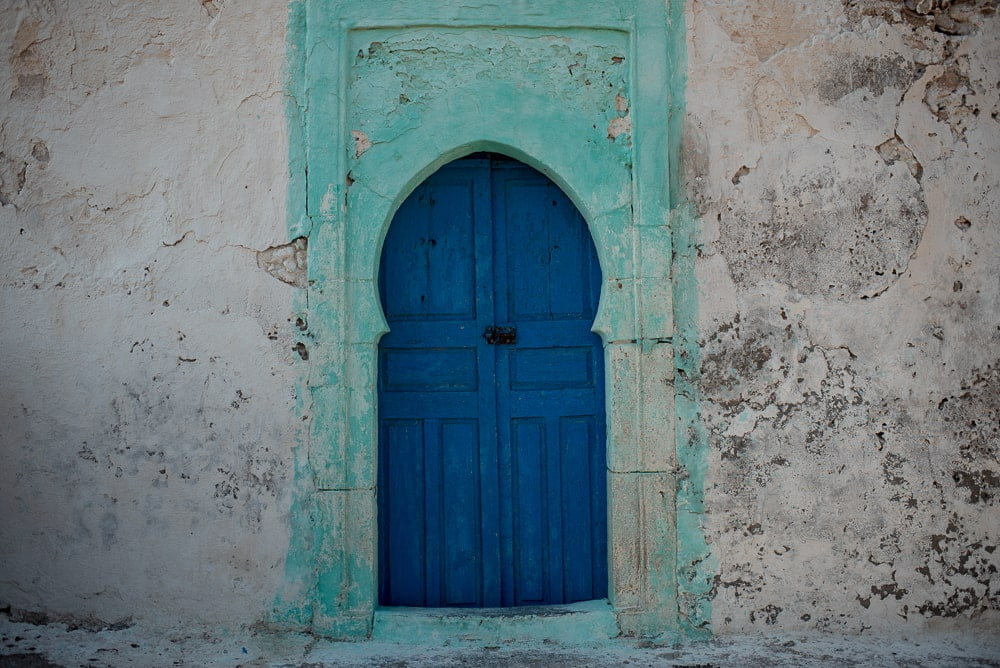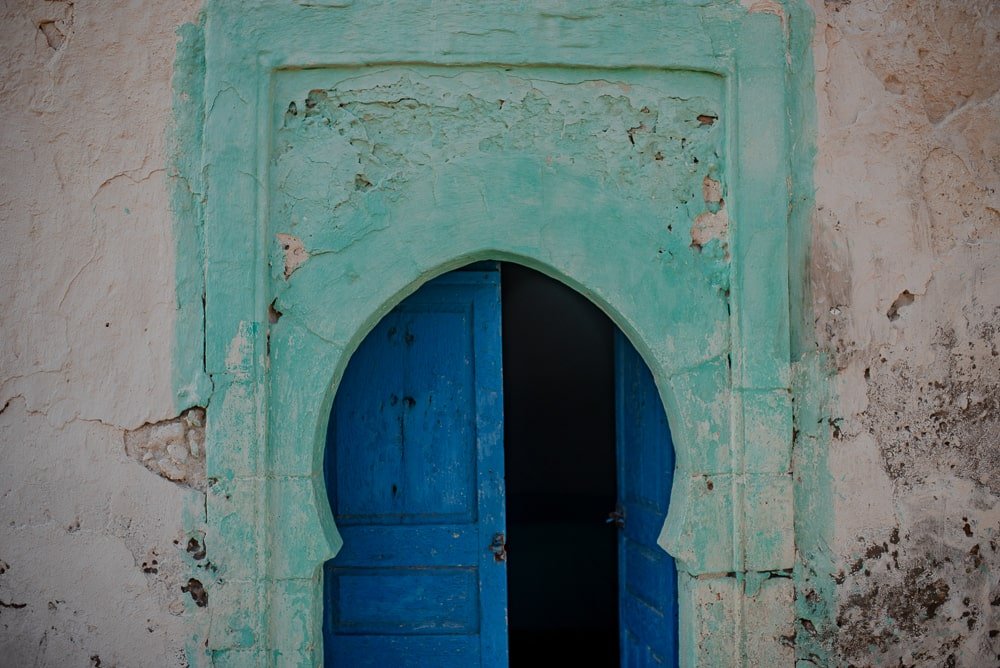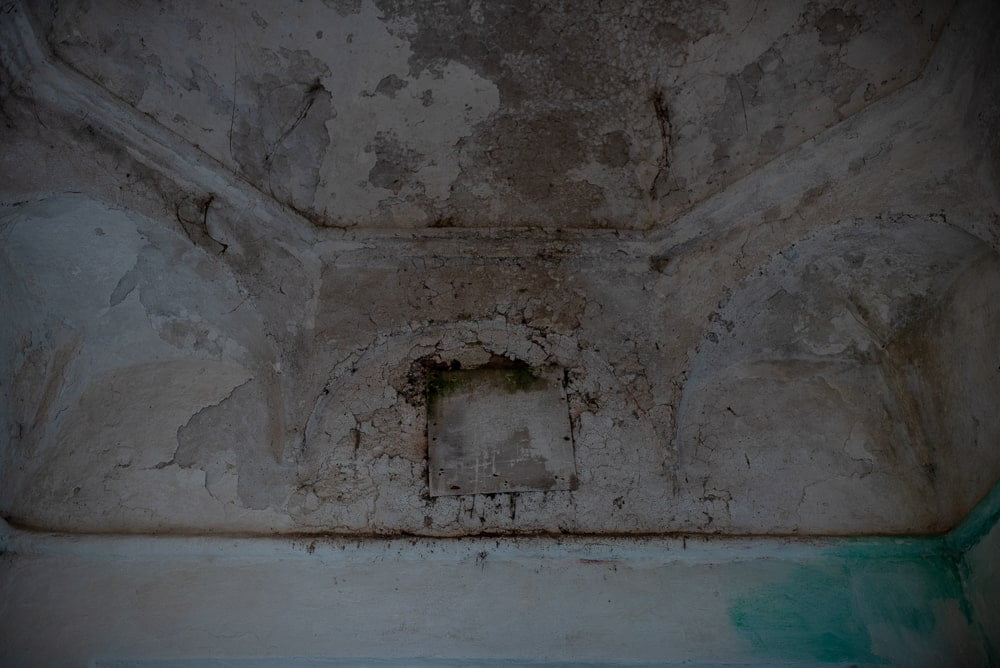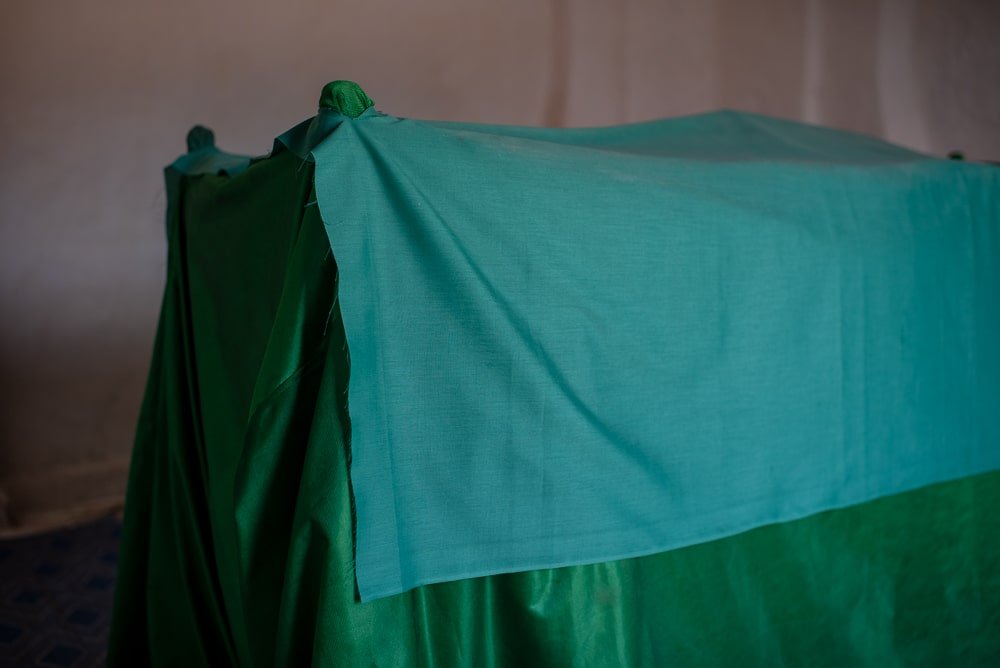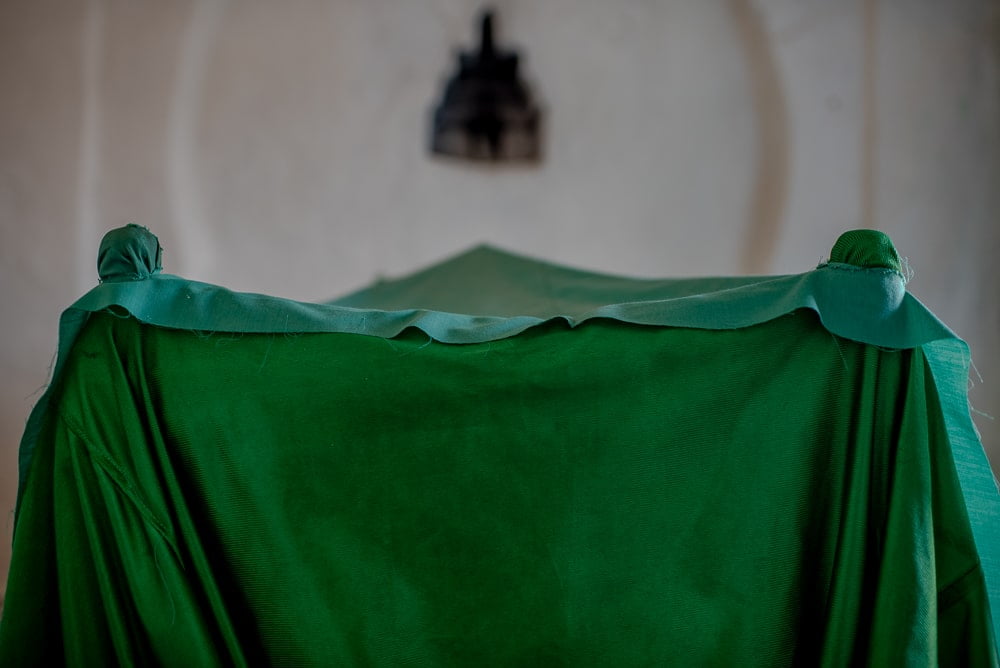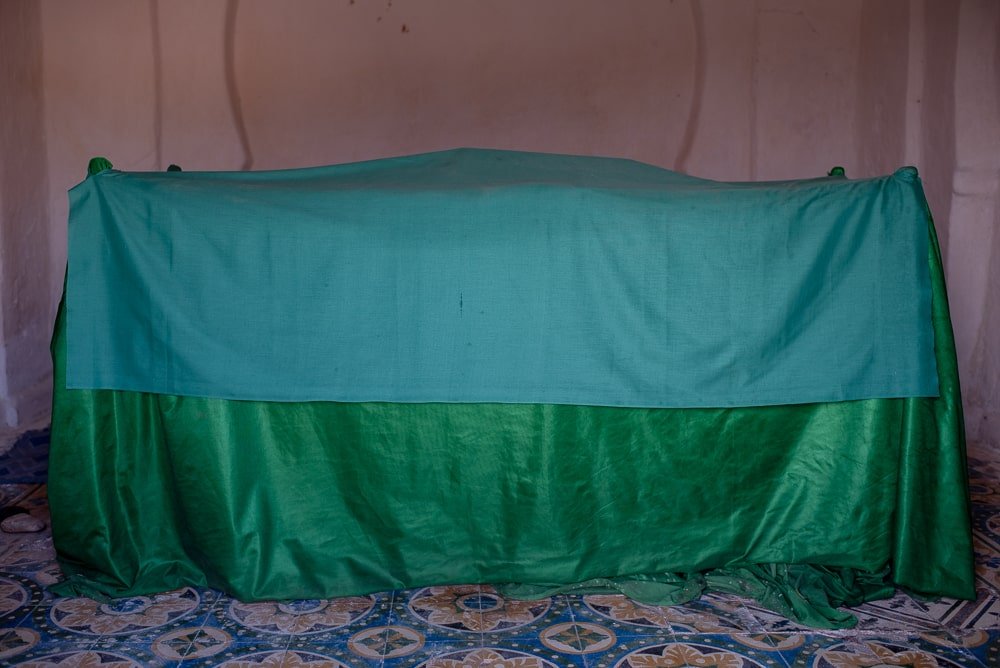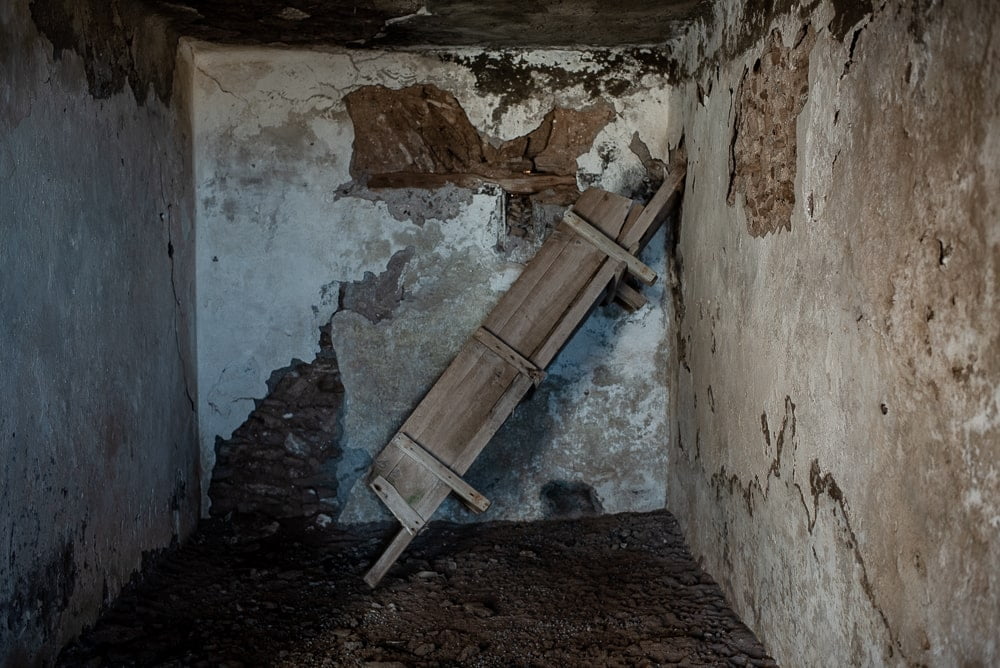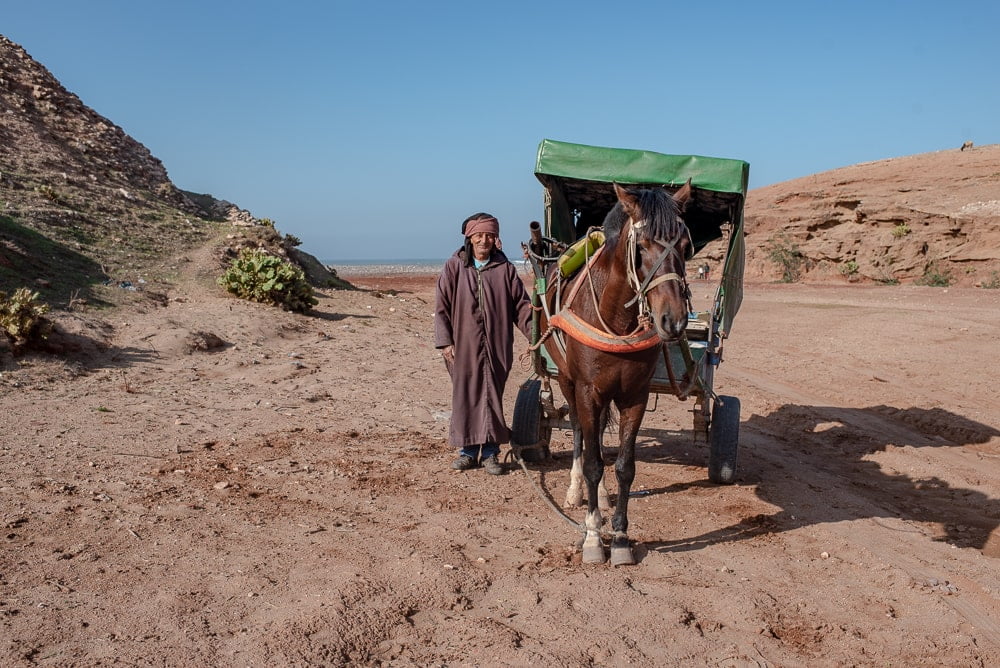The zaouia/koubba of Sidi Ishaq is located beautifully on the Atlantic coast. It is a short caleche ride along sandy tracks from the small town of Sidi Ishaq some 3 miles inland. The caleche park is situated in the centre of the town just off the R301 which dramatically follows the coast as far north as Safi.
The final stage of the journey, when the koubba can first be seen against the surf and the track drops down to the small sandy delta of the dried up river, is spectacular.
I can find no information about Sidi Ishaq, other than the shrine is a part of the Regraga annual pilgrimage throughout the Chiadme region.
Baraka and Saints
The notion of Baraka lay at the foundation of Muslim and Jewish conceptions and perceptions of the sacred.
Medieval devotees sought the baraka of prophets, saints and devotional objects. All righteous individuals possessed baraka, but only saints through their charisma, devotion, exemplary learning and piety possessed a sufficient degree to render them as objects of ziyara or pious visitation.
Rulers, theologians, students and common people all sought baraka. Seeking baraka was both a private and a public affair. In so doing, devotees engaged the holy and each other at pilgrimage sites. Baraka was also produced from the act of pilgrimage to a shrine with which devotees made physical contact through kissing, rubbing themselves against it, lying on it, or spending the night in its presence. The existence of baraka at a shrine insured miraculous cures for the infirm as it did stability, relief, abundance, prosperity and happiness. Jews, Muslims and Christians engaged in such rituals.
The American anthropologist Clifford Geertz’s description of a shaykh’s disciple washing his ill master’s garment and then drinking the water serves a powerful example of how baraka functions. After drinking the water, Geertz observes that the disciple, “returned to the sheikh, his eyes aflame, not with illness, for he did not fall sick, but as though he had drunk a powerful wine’.
The word ‘baraka’ means blessing. In Morocco it is used to describe a mysterious wonder-working force which is looked upon as a blessing from God, a ‘blessed virtue’. It may be conveniently translated into English by the word ‘holiness’.
Ethnologist Edward Westermark explains that a person holding an unusual measure of baraka is considered to be a holy man. The Prophet Muhammed was the person that once held the highest measure of baraka, which is now transferred through Fatiima to the Sharifs. Still not all of those in the line can be considered holy. In addition to this group there are the marabout, who hold baraka, which they might have acquired while being the servant of one of Mohammed’s descendants.
What they hold of baraka may be inherited by their offsprings. Other means of acquiring baraka are eg spitting into another person’s mouth, ie by saliva, or sharing a meal with someone who holds baraka. The safest means of transfer is by physical contact between the holder and the receiver of baraka. Finally all methods of obtaining baraka can be used without the holder’s intention to share, ie baraka can be inherited, transferred and stolen.
Westermark’s analysis can be summarised as follows :
Holders of Baraka include :
- Muhammad
- The Sharif
- The marabout
- The mujahidun ( those who promote Islam – early meanings were devoid of violent connotations )
- The ascetics and pious ( men and women alike )
- Their relations and their graves
- The graves of fictive holy men, even little children, being sinless
- Older children having read the Qu’ran
- Mothers of twin boys, going to be circumcised
- Mentally disordered, ( having baraka but disregarding religious obligations )
- Places, where holders of baraka rested
- Spirits that reside at those places
- Weapons, especially cannons
- Animals, by contact with holders of baraka
- Animals, holding baraka as such eg horse, sheep, dove, bee etc )
- Animal products ( such as honey, milk )
- Plants and vegetable products ( cereals/bread, olives/oil, herbs, cures etc )
- The soil, upon which plants and animals prosper )
- Rain and sunshine, essential for prosperity
- Periods ( feasts, Islamic calendar, Ramadan, lailatu’l-qadr etc, phases of vegetation )
- Actions, considered virtuous or basic in Islam
- Names with special significance in Islamic history ( Muhammad, Ali etc )
- Numbers, mainly odd ones ( one for Allah’s tauhid etc )
Acquisition of Baraka :
- Holding baraka per se
- By descent
- Positive action, ie piousness
- Negative action ie theft
Loss of Baraka :
- Contact with ritually unclean ( persons such as disbelievers, menstruating women etc and objects )
- Unintentional transfer ( baraka being stolen )
- Contact between baraka and baraka according to some sources
Westermark also states that the borders between the holy and the profane often are not clear. ‘ A beneficial power is baraka only if it is looked upon as more or less mysterious, wonder-working, supernatural, not if it appears ordinary, common, ‘profane’.
Baraka can also exist in formal social transactions. For example baraka may be expressed through the formula of an invitation for coffee, where the following salutations exist : ‘ May baraka be upon you’ and the reply ‘May baraka be upon you as well’. Following this exchange coffee is served. To refuse the exchange means to refuse the hospitality, to refuse the baraka, to behave as enemy. By accepting the invitation, a mutual, partial transfer of baraka occurs,. In this example baraka is connected with something which symbolises surplus and prosperity ( ie the coffee ) which is a blessing from heaven.
Baraka can increase and reduce, and, for example, is without any effect if the house concerned suffers from bad luck , ie one does not offer coffee for 40 days when a member of the family has recently died.
The source of baraka is that force mysterious being the source of good and evil in a sacred dimension where the two forces ( ie sacred tahir and profane najis ) meet, which causes miracles, protection and prosperity. A being or an object which operates in such a way is a holder of baraka. It has been described as ‘the benevolent influence of the Sacred by a medium of Supernatural force’.
Etymology
In Arabic, the work baraka refers literally to ‘getting down on your knees’, and refers to camels, especially connected with Arab nomadism. A reference to the prosperity and multiplicity connoted by baraka can be associated with the Arab word bark, suggesting a herd of camels. Furthermore the kneeling position of a camel can be associated by being owned and mounted by a rider.
In other languages baraka can simply mean ‘blessing’.
Baraka is spiritual, perceptual and emotive, rather than conceptual. It may be said that baraka is the emanation and perpetuity of holiness in the person of a saint, which manifests itself in objects, or persons with whom he has come into contact posthumously or during his life. In addition to people, its most common receptacles include earth, water, rocks and trees, not to mention architectural forms such as tombs, shrines, mosques and other structures.
